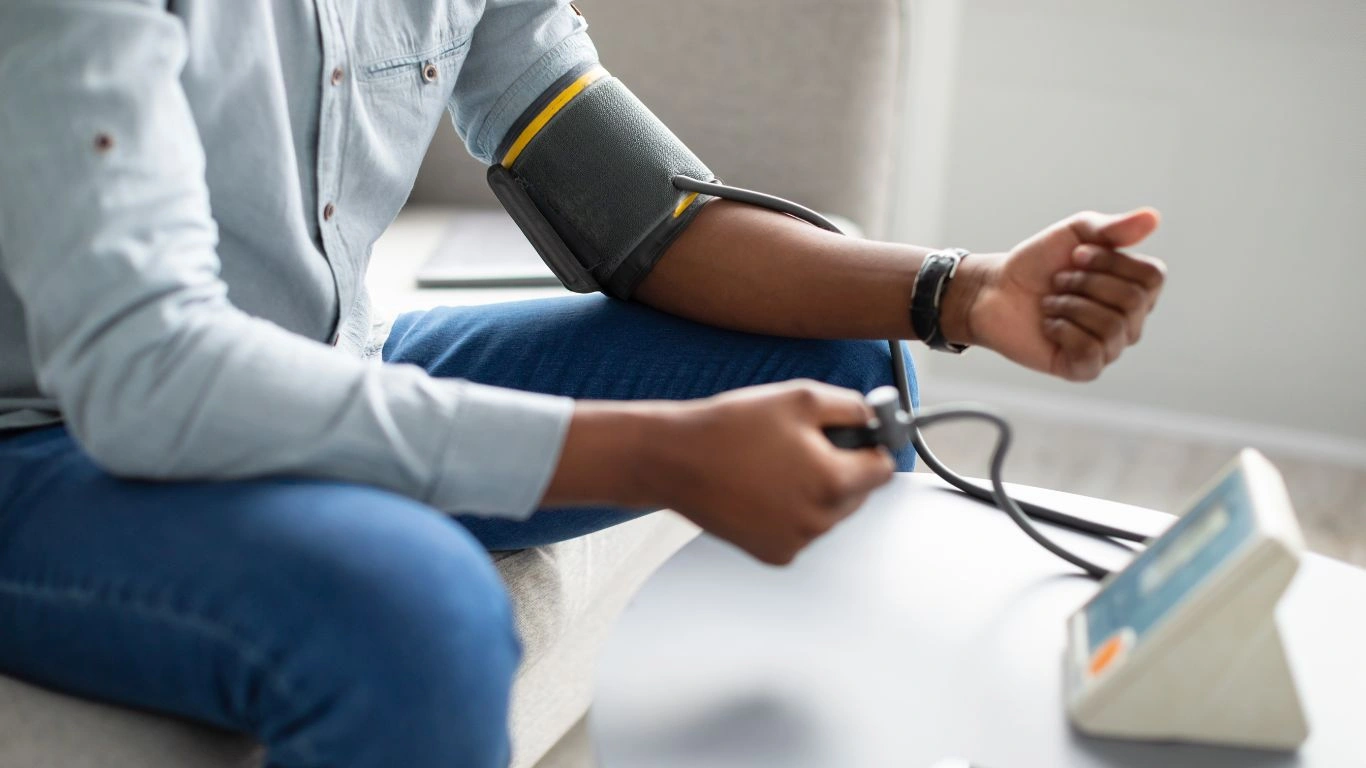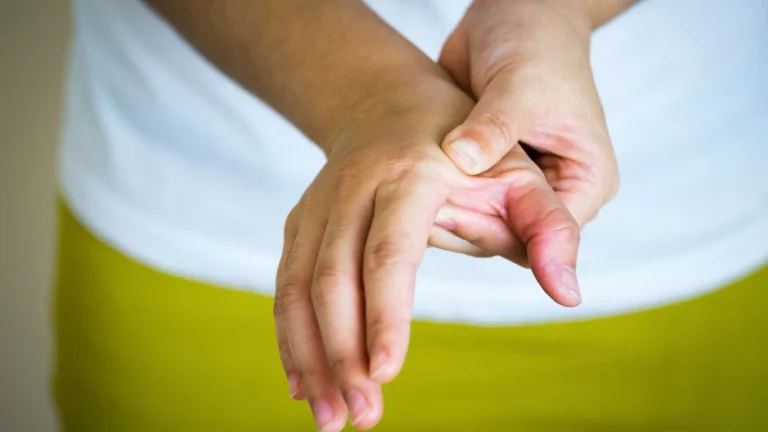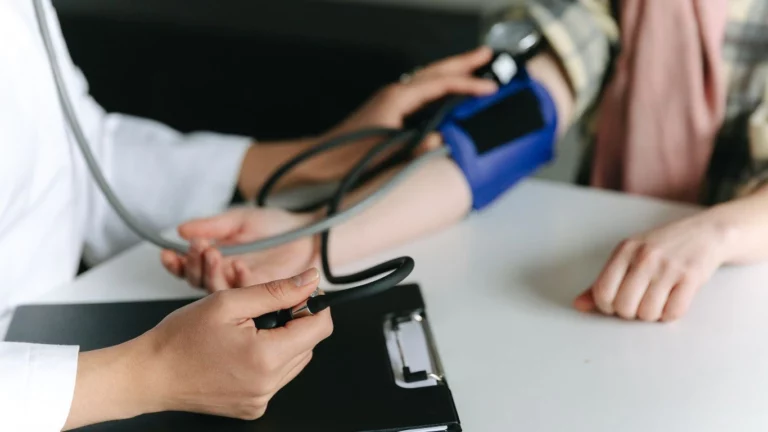Effective Solutions for High Blood Pressure and Swelling in Feet
As an Internal Medicine physician, I often encounter patients with high blood pressure who are also dealing with swelling in their feet. The connection between high blood pressure and swelling in the feet is something that many people overlook, but it’s actually quite common, and it can sometimes be a sign of more serious underlying issues. You might be wondering why you’re experiencing swollen feet despite controlling your blood pressure, or perhaps you’re dealing with high blood pressure and just noticed the swelling. Either way, you’re not alone, and understanding the relationship between these two conditions is key to managing both your blood pressure and your overall health. Let’s dive into what causes this swelling, how high blood pressure can contribute to it, and what you can do to feel better.
Understanding the Link Between High Blood Pressure and Swelling in the Feet
High blood pressure, or hypertension, is a condition that affects millions of people worldwide. It happens when the force of the blood against the walls of your arteries is consistently too high. Over time, this puts extra strain on your heart, kidneys, and blood vessels, leading to complications if left untreated. One of the lesser-known symptoms of high blood pressure is swelling in the feet, which can be frustrating and uncomfortable. But why does this happen?

Swelling, or edema, in the feet is often caused by fluid retention. The body has several ways of controlling fluid balance, but when the blood vessels are under pressure due to high blood pressure, they may not work as efficiently as they should. When blood pressure is high, it can cause the blood vessels in your legs and feet to leak fluid, which then accumulates in the tissues, causing swelling. This is most commonly noticed at the end of the day, after prolonged periods of standing or sitting. You may notice your feet and ankles feel tight or heavy, which can be a sign that fluid is building up in the lower extremities.
How High Blood Pressure Impacts the Blood Vessels
To really understand why high blood pressure causes swelling in the feet, we need to take a closer look at what happens inside the body. The blood vessels that supply your legs and feet are crucial for maintaining proper circulation. These vessels are flexible and elastic, which helps blood flow freely. However, when your blood pressure is too high, the constant force can cause the blood vessel walls to thicken, narrow, and become less flexible. This results in poor circulation, especially in the lower legs and feet, which can contribute to fluid retention and swelling.
Moreover, high blood pressure can damage the tiny blood vessels in your kidneys, impairing their ability to filter fluids and waste from your blood. This can also lead to fluid buildup in your body, further contributing to the swelling in your feet. If you’re already dealing with high blood pressure, it’s essential to monitor this symptom carefully because it can be an indication that your hypertension is affecting more than just your blood pressure levels.
When to Be Concerned About Swelling in Your Feet
Swelling in the feet is common, but if you’re also dealing with high blood pressure, it’s important to be mindful of other symptoms that might indicate a more serious problem. If you’re experiencing persistent swelling or if the swelling is accompanied by other symptoms like shortness of breath, chest pain, or dizziness, you should seek medical attention right away. These could be signs of heart failure, kidney problems, or other cardiovascular issues, all of which are more likely to occur when hypertension is not properly managed.

If your swelling only occurs occasionally, such as after a long day on your feet or during hot weather, it may not be a cause for concern. However, if you notice that the swelling is becoming more frequent, more severe, or is lasting longer than usual, it’s definitely worth discussing with your healthcare provider. You may need to adjust your treatment plan or explore other underlying causes that could be contributing to the swelling.
Other Conditions That Can Cause Swelling in the Feet
While high blood pressure is a common cause of swelling in the feet, there are several other conditions that could be contributing to your symptoms. It’s important to consider all possible causes to rule out more serious conditions. Some of the common ones include:
- Heart failure: When the heart is not pumping blood efficiently, it can cause fluid to build up in the body, particularly in the feet and ankles.
- Kidney disease: Impaired kidney function can prevent your body from properly eliminating excess fluid, leading to swelling.
- Venous insufficiency: This occurs when the veins in your legs are not working properly, causing blood to pool in your feet and ankles.
- Medications: Some medications, especially those used to treat high blood pressure, can have side effects that lead to fluid retention and swelling.
It’s always a good idea to rule out these other conditions, especially if you’re experiencing additional symptoms like shortness of breath, fatigue, or unexplained weight gain.
Managing High Blood Pressure and Preventing Swelling in the Feet
If you’re struggling with both high blood pressure and swelling in your feet, you might be wondering how to manage both. The good news is that with the right treatment and lifestyle changes, you can significantly reduce both your blood pressure and the swelling in your feet. Let’s take a look at some tips that can help.

1. Follow your prescribed treatment plan: Your healthcare provider will likely recommend medications to control your blood pressure, and it’s important to take them as directed. If you’re experiencing side effects, don’t hesitate to reach out to your doctor for alternatives.
2. Elevate your feet: After a long day, try elevating your feet to help fluid drain out of your lower extremities. This can be especially helpful if you’re noticing swelling after standing or walking for extended periods.
3. Maintain a healthy weight: Carrying excess weight puts added strain on your heart and blood vessels, which can worsen both your blood pressure and swelling. Eating a balanced diet and staying active can help manage both.
4. Watch your salt intake: Salt can cause your body to retain fluid, making swelling worse. Try reducing your sodium intake and opting for fresh, unprocessed foods.
5. Stay active: Regular exercise, particularly activities like walking or swimming, can help improve circulation and reduce swelling in the feet. Always check with your doctor before starting a new exercise routine, especially if you have hypertension.
In the next section, we’ll dive deeper into specific strategies to manage high blood pressure and how they can help with swelling. Stay tuned!
How Your Diet Impacts High Blood Pressure and Swelling in Your Feet
When it comes to managing high blood pressure and swelling in the feet, one of the most important factors to consider is your diet. What you eat can either contribute to or help alleviate these issues. As someone who’s worked with patients for years, I’ve seen first-hand how a few simple dietary changes can make a big difference in both blood pressure control and fluid retention.

Reducing sodium intake is one of the best dietary changes you can make when managing high blood pressure. Excess salt in your diet leads to fluid retention, which can worsen swelling in your feet and ankles. You may not realize it, but many processed foods like canned soups, frozen meals, and fast food are loaded with sodium. The American Heart Association recommends limiting sodium intake to less than 1,500 milligrams per day for most adults, especially those with high blood pressure.
In my own experience, I’ve noticed that patients who reduce their sodium intake often see significant improvements in both their blood pressure and the swelling in their feet. But it’s not just about cutting out salt. It’s also about replacing processed foods with fresh, whole foods that support healthy circulation.
Potassium-Rich Foods for Better Circulation
Potassium is another key nutrient when it comes to managing high blood pressure. It helps balance out the negative effects of sodium, reducing its impact on fluid retention. Foods rich in potassium, like bananas, spinach, sweet potatoes, and tomatoes, can work wonders for blood pressure control and may help reduce swelling in the feet.
If you’re struggling with swelling in your feet, incorporating more potassium-rich foods into your diet can help regulate fluid balance and support better blood flow. I always recommend that my patients focus on a balanced, heart-healthy diet that includes plenty of fruits, vegetables, whole grains, and lean proteins. This not only helps manage hypertension but can improve overall wellness.
Regular Exercise: A Simple Yet Effective Solution
If you’re dealing with both high blood pressure and swelling in your feet, one of the best things you can do is get moving. Regular exercise helps keep your blood pressure in check while also promoting better circulation. Whether it’s a brisk walk, a swim, or yoga, moving your body is key to preventing fluid buildup and improving heart health.

Physical activity helps strengthen the heart, allowing it to pump blood more efficiently. As a result, your circulation improves, reducing the chances of fluid accumulating in your feet. One thing I tell my patients is that even small amounts of movement can make a huge difference. For example, walking for 30 minutes a day can lower blood pressure and reduce swelling. I always encourage people to start slowly and build up to longer sessions as they feel more comfortable.
Aside from improving circulation, exercise also helps control your weight. Maintaining a healthy weight is vital when it comes to managing both high blood pressure and swelling, as extra weight can put additional stress on your heart and blood vessels. In fact, just losing a few pounds can lead to noticeable improvements in both blood pressure and foot swelling.
Low-Impact Activities to Try
If you find it difficult to get started with exercise, don’t worry. There are plenty of low-impact activities that are easy on your joints and can still have a significant impact on your blood pressure and swelling. Some options include:
- Walking: A low-impact, easy exercise that gets the blood flowing and reduces swelling in the legs and feet.
- Swimming: Provides a full-body workout without putting stress on your joints or feet, perfect for those dealing with swelling.
- Yoga: Improves circulation, reduces stress, and can help manage both blood pressure and swelling.
- Biking: Another great low-impact exercise that promotes circulation and helps reduce swelling.
Even if you can’t fit in a full workout every day, try to incorporate more movement into your routine. Take the stairs instead of the elevator, go for a short walk after meals, or even stretch while watching TV. Every little bit helps!
How Stress Affects Blood Pressure and Swelling in the Feet
We all know that stress can take a toll on our health, but did you know it can also contribute to high blood pressure and swelling in the feet? As someone who’s worked in internal medicine for years, I’ve seen how stress can raise blood pressure levels, making the heart work harder and impairing circulation. This can lead to fluid buildup in the feet, exacerbating swelling.
When you’re stressed, your body releases hormones like cortisol and adrenaline that increase heart rate and narrow blood vessels. This can spike blood pressure, making it harder for your body to circulate blood properly. As a result, fluid can pool in the lower parts of your body, including your feet and ankles.
Managing Stress for Better Health
Luckily, there are plenty of ways to reduce stress and, in turn, improve your blood pressure and foot swelling. Some effective stress management techniques include:
- Meditation: Mindfulness and meditation can lower stress levels and help keep your blood pressure in check.
- Deep breathing exercises: Practicing slow, deep breaths can activate the body’s relaxation response and reduce blood pressure.
- Journaling: Writing about your thoughts and feelings can help you process emotions and lower stress.
- Spending time in nature: A walk in the park or time spent outdoors can have a calming effect on the mind and body.
Taking time each day to manage your stress levels is essential not just for your mental health but also for controlling high blood pressure and reducing swelling in your feet. It’s all about finding what works for you and making it a part of your routine.

Incorporating stress management techniques into your daily routine, along with healthy habits like exercise and a balanced diet, can create a powerful synergy in managing both blood pressure and foot swelling.
Medications for High Blood Pressure and Their Effect on Swelling in Feet
When managing high blood pressure, medications often become a necessary part of the treatment plan. As an internal medicine physician, I’ve seen that while medications can effectively control blood pressure, they sometimes have side effects that might contribute to issues like swelling in the feet. Understanding how these medications work, and their potential side effects, can help you make informed decisions about your treatment options.

Common Medications for High Blood Pressure include diuretics, ACE inhibitors, beta-blockers, and calcium channel blockers. Each of these works in a slightly different way to lower blood pressure, but they can all have effects on your circulation and fluid balance, which may contribute to swelling in the feet.
One class of medications that is often prescribed is diuretics, also known as “water pills.” These are meant to help your body get rid of excess salt and water through urine, thus lowering your blood pressure. While diuretics can be incredibly effective in treating high blood pressure, they sometimes cause dehydration or an electrolyte imbalance, which could lead to swelling in the feet and ankles. I’ve seen patients who experience increased swelling when they’re prescribed these medications, but once their electrolyte levels are balanced, the swelling tends to decrease.
Other Medications and Their Side Effects
Other medications like beta-blockers and calcium channel blockers also play a key role in managing hypertension. These medications work by either slowing down the heart rate or relaxing the blood vessels, which lowers blood pressure. However, one of the side effects of beta-blockers, for instance, can be fluid retention, leading to swelling in the lower extremities. In my experience, I’ve worked with patients who found that switching to a different class of blood pressure medication helped alleviate this issue.
It’s important to note that while these medications are essential in treating high blood pressure, it’s crucial to discuss any side effects, such as swelling in your feet, with your doctor. There may be alternative medications or dosages that can achieve the same therapeutic goals without the unwanted side effects.
What You Can Do to Prevent Swelling in Your Feet
While high blood pressure and medications may contribute to swelling in the feet, there are a number of strategies you can use to help prevent or reduce this swelling. In my practice, I’ve often seen that a combination of lifestyle changes, medical management, and self-care can be the most effective approach.

1. Wear Compression Socks
Compression socks are a simple yet highly effective way to help reduce swelling in your feet and legs. These specially designed socks apply gentle pressure to your lower legs, improving circulation and preventing fluid buildup. They are particularly useful if you spend long periods sitting or standing. I’ve recommended compression socks to many patients, and many of them report feeling a noticeable difference in their foot swelling after just a few hours of wearing them. You can find compression socks in various levels of compression, so it’s important to consult with your doctor about which level is right for you.
2. Stay Hydrated
While it might seem counterintuitive, staying hydrated is essential for reducing swelling. When you’re dehydrated, your body retains more fluid to compensate, which can make swelling worse. Drinking enough water throughout the day helps your body regulate fluid balance and improves circulation. I always tell my patients to aim for at least 8 glasses of water per day, and more if you’re active or live in a hot climate. This simple habit can go a long way in preventing swelling.
3. Elevate Your Feet
One of the most effective ways to reduce swelling in your feet is to elevate them. This helps the fluid that has pooled in your feet and ankles to drain back into your body. If you’re sitting for long periods, I recommend propping your feet up on a pillow or footrest whenever you get the chance. Even just 10 to 15 minutes of elevation can make a difference. When lying down, try to elevate your feet above the level of your heart to encourage fluid drainage.
4. Avoid Prolonged Standing or Sitting
If your job or daily routine involves standing or sitting for long stretches of time, try to take breaks to move around. Prolonged periods of immobility can hinder circulation, leading to fluid retention and swelling. I encourage my patients to get up, stretch, and walk around for a few minutes every hour to keep the blood flowing and reduce swelling. This is especially important if you have high blood pressure, as your circulation may already be compromised.
Understanding the Role of Kidney Health in Swelling
As we discussed earlier, high blood pressure can have a significant impact on your kidneys, potentially leading to kidney disease. When the kidneys aren’t working efficiently, they can’t properly filter out waste and excess fluids from your body, which can lead to swelling. This is another reason why it’s so important to manage your blood pressure effectively.
If you’re experiencing swelling in your feet and ankles in addition to other symptoms like fatigue, changes in urination, or unexplained weight gain, your doctor may want to evaluate your kidney function. Early detection and treatment of kidney problems can prevent further complications, so it’s crucial to stay on top of your blood pressure management and address any concerns as soon as they arise.
Monitoring Your Progress and Staying in Communication with Your Doctor
Managing high blood pressure and swelling in the feet requires ongoing attention and monitoring. Regular follow-ups with your healthcare provider are essential to track your blood pressure and assess the effectiveness of your treatment plan. If you’re noticing that your swelling is worsening or becoming more frequent, make sure to bring it up with your doctor during your next visit. In my experience, keeping an open line of communication with your healthcare team is one of the best ways to manage these issues successfully.
Along with medication adjustments, lifestyle changes like diet, exercise, and stress management can play a pivotal role in keeping both your blood pressure and swelling in check. Remember, the road to managing high blood pressure and swelling in your feet doesn’t have to be a long or difficult one—it just takes consistent effort, patience, and the right support from your healthcare team.
Disclaimer
The information provided in this article is for educational purposes only and is not intended as medical advice. Always consult with your healthcare provider before making any changes to your diet, exercise routine, or medication. Each individual’s situation is unique, and your doctor can help tailor the best approach to managing high blood pressure and swelling in your feet.
For more information on managing hypertension and its related symptoms, you can visit trusted health resources like National Institutes of Health or Health.com.

Dr. Gwenna Aazee is a board-certified Internal Medicine Physician with a special focus on hypertension management, chronic disease prevention, and patient education. With years of experience in both clinical practice and medical writing, she’s passionate about turning evidence-based medicine into accessible, actionable advice. Through her work at Healthusias.com, Dr. Aazee empowers readers to take charge of their health with confidence and clarity. Off the clock, she enjoys deep dives into nutrition research, long walks with her rescue pup, and simplifying medical jargon one article at a time.






